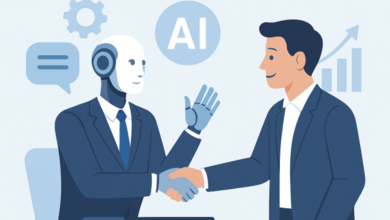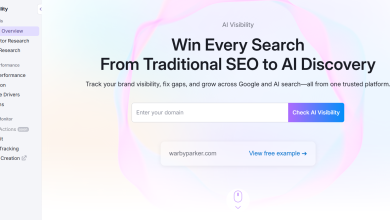
The PR industry is experiencing a quiet revolution, and as surprising as it may be, it’s happening in marketing departments of mid-size companies, communications teams at growing startups, and scrappy organizations that have always been told they need to “hire a real PR firm” to get serious media coverage.
For decades, strategic PR has been gatekept by agencies with hefty retainers and black-box methodologies. The message was clear: you need us because this work is too complex, too relationship-dependent, too nuanced for anyone else to handle it. But AI has fundamentally changed that equation.
Today, organizations are discovering they can execute sophisticated PR campaigns internally using AI tools paired with strategic foundations and coaching. The result? Better ROI, faster execution, and institutional knowledge that stays in-house instead of walking out the door with your agency contract.
The Case Study
I worked with a festival client who epitomizes this shift. They needed comprehensive PR support for their annual event but couldn’t justify the agency retainer for a seasonal campaign.
Instead, we built them a different solution: a comprehensive Media Map that included journalist research, story angles, pitch templates, and outreach timelines. We paired this strategic foundation with AI tools for pitch customization and follow-up tracking.
The result? They executed their PR campaign internally, landing desired coverage, and creating a repeatable playbook they can use year after year.
The internal team, who had never done PR before, was able to confidently pitch journalists, build media relationships, and secure opportunities that landed with their target audience.
This isn’t a one-off; it’s a preview of how enterprise communications is evolving.
The Intentional Tech Stack Sandwich
The winning formula isn’t replacing humans with AI or throwing money at traditional agencies. It’s creating an intentional tech stack sandwich: strategic foundations + AI execution tools + ongoing expert coaching.
Layer 1: Strategic Foundations Every successful campaign starts with humans and strategic thinking. This includes understanding your audience, identifying newsworthy angles, mapping your competitive landscape, and building media target strategies. AI can’t do this strategic work—it requires human judgment, industry knowledge, and understanding context.
Layer 2: AI Execution Tools Once the strategy is clear, AI excels at execution tasks: researching journalists and their beats (make sure you check their work!), drafting pitches, customizing outreach based on journalist preferences and outlet style, tracking follow-ups and response rates, and analyzing successful pitch patterns.
Layer 3: Expert Coaching Strategic campaigns require real-time adjustments. News cycles shift, stories get buried, journalists change beats. Monthly coaching calls with a strategic expert ensure teams can pivot effectively when circumstances change, and your junior staffers train up to learn more about the strategy behind their work.
The Scaling
For large organizations, this model solves several persistent problems:
- Empowering Junior Staff: Marketing coordinators and communications assistants can execute senior-level campaigns using strategic frameworks plus AI tools. Instead of hiring expensive senior communications talent for every team, organizations can scale strategic execution across multiple junior hires.
- Multi-Department Coordination: When every department needs PR support—product launches, executive thought leadership, crisis response—the Media Map ensures consistency. Teams use the same strategic methodology while AI customizes execution for different audiences and outlets.
- Global Scalability: International organizations can adapt core strategic frameworks for local markets. The AI handles regional journalist research and cultural customization (don’t forget to check that work again!) while maintaining strategic coherence across markets.
- Institutional Knowledge: Unlike agency relationships where expertise ends when contracts end, this model builds internal capabilities. Teams develop PR muscles that compound over time rather than disappearing with agency churn or retainer drain.
The Economics
Numbers make this shift inevitable. A typical PR agency retainer can be $10,000-$25,000 per month for strategic work, plus execution. Over a year, that’s $120,000-$300,000 per campaign.
Compare that to building internal capabilities: strategic consultation and Media Map development is more like $10,000-$25,000 upfront, plus $5,000-$7,000 monthly for ongoing coaching. For a yearlong campaign, that’s more like $65,000-$100,000 plus the education.
If you have multiple campaigns each year, the cost savings are dramatic and your internal strategic control increases. More importantly, you aren’t dependent on agency availability, agency priorities, or agency staff turnover. You control your own communications destiny.
The Implementation
Organizations ready to build internal PR capabilities should follow this proven framework:
- Phase 1: Strategic Foundation (Month 1-2) Partner with a strategic expert to build your Media Map framework, including audience analysis, message development, journalist research methodology, and campaign planning templates. Institute monthly coaching calls to ensure strategic adjustments happen in real-time. *This strategic work cannot be automated—it requires human expertise and business context.
- Phase 2: AI Integration (Month 2-3) Implement AI tools for research, pitch customization, and campaign tracking. Train your team on prompt engineering for pitch development and journalist research. Test alignment for your AI-generated content and strategic framework.
- Phase 3: Pilot Campaign (Month 3-4) Execute a pilot campaign using your intentional tech stack sandwich. Track your results meticulously: response rates, coverage quality, and team time investment. Refine your processes based on real performance data.
- Phase 4: Scale and Optimize (Month 4+) Roll out the methodology across teams and campaigns. Build institutional knowledge through documentation and cross-training.
What This Means for the Comms Industry
This isn’t about eliminating agencies entirely. Strategic consulting will always have value, especially for complex crisis situations or major brand repositioning. But the days of paying agency retainers for your routine campaign execution are numbered.
Smart organizations recognize that PR strategy consultants can be far more valuable with internal execution and AI support. Those that embrace this shift first will have significant advantages: lower communications costs, faster campaign execution, better strategic control, and internal teams that actually understand how PR works rather than outsourcing all knowledge to agencies.
The PR agency monopoly isn’t ending because agencies don’t provide value. It’s because AI has finally made strategic communications accessible to organizations willing to invest in internal capabilities paired with expert foundations and coaching.
The question isn’t whether this shift will happen—it’s whether your organization will be leading it or catching up later.





